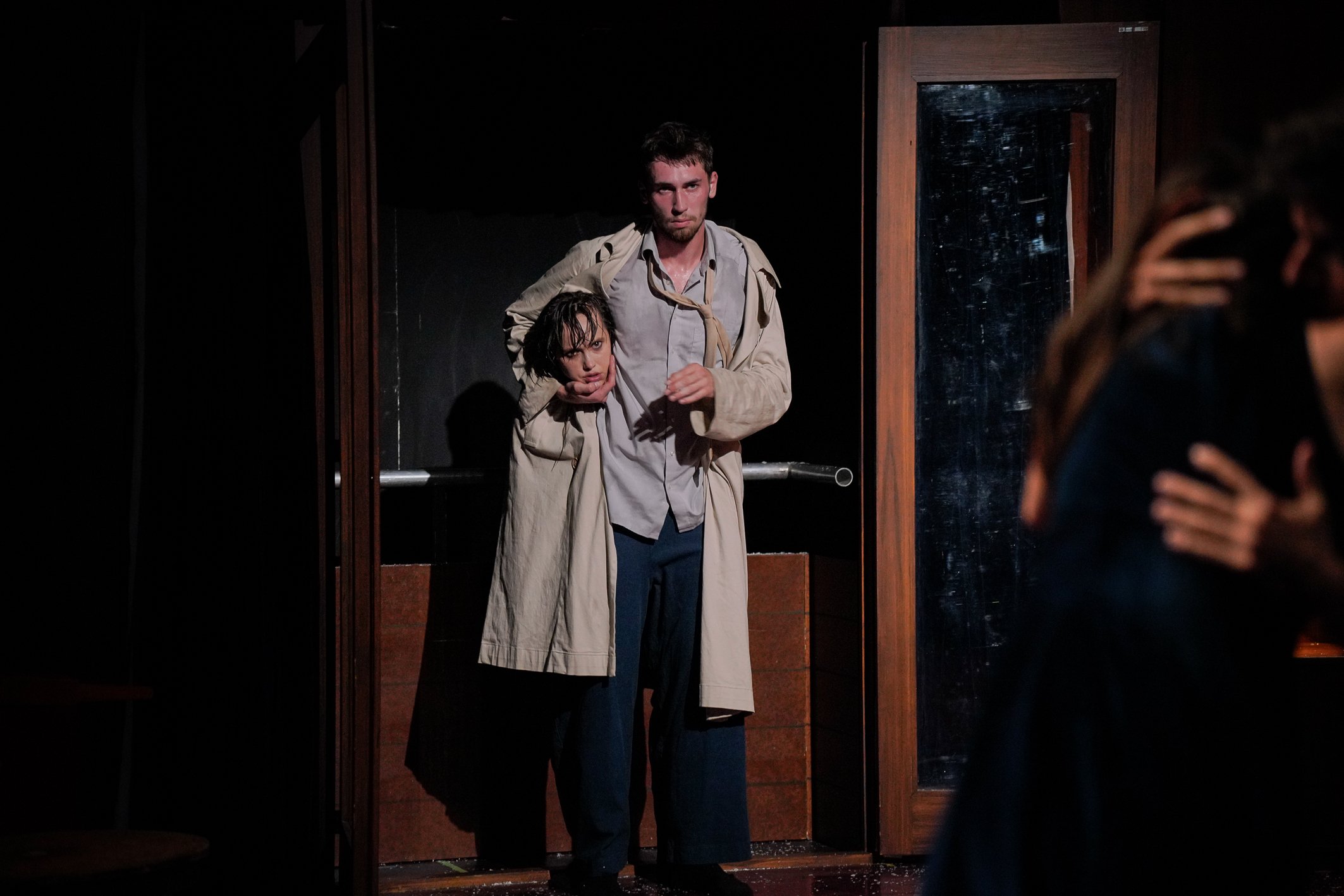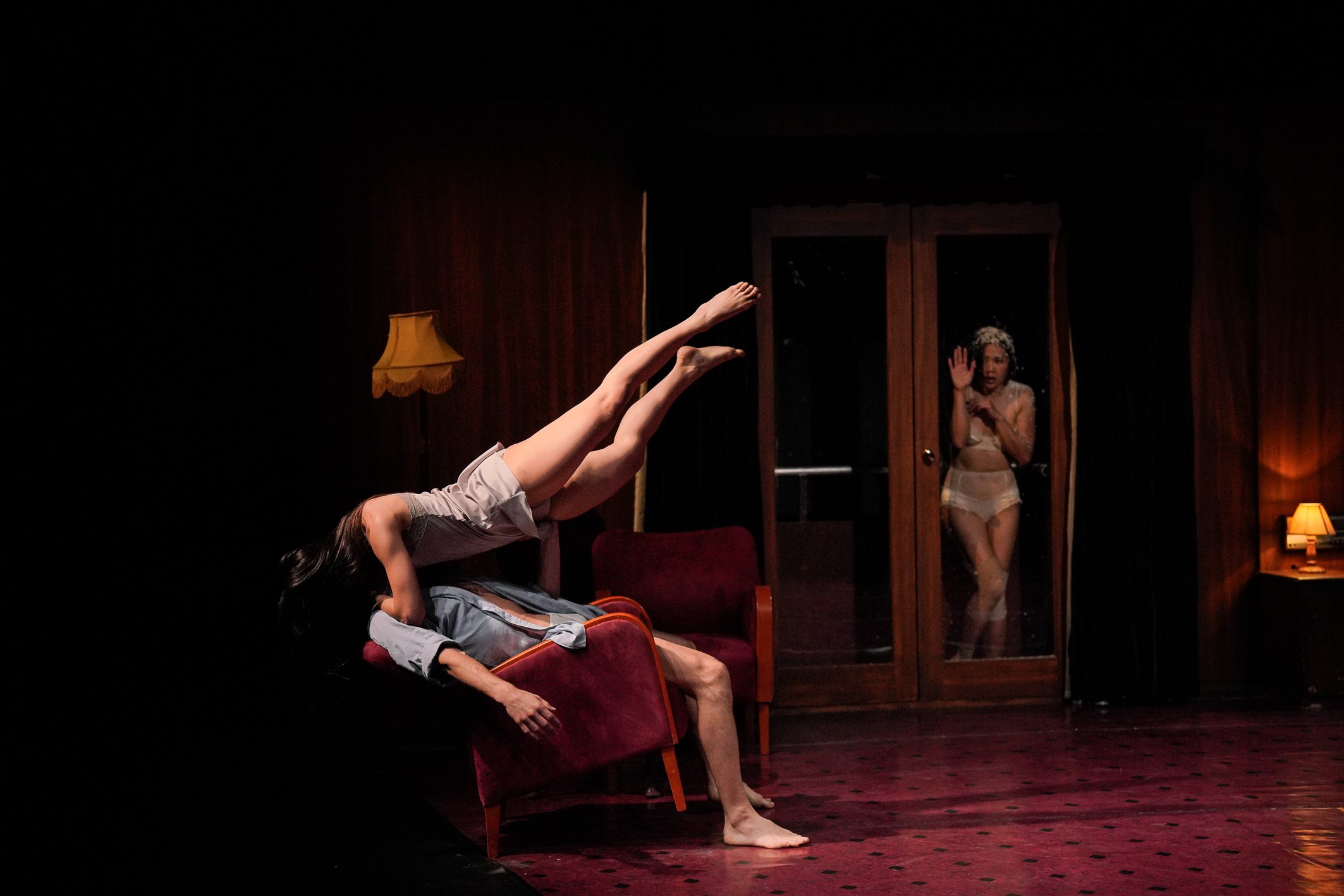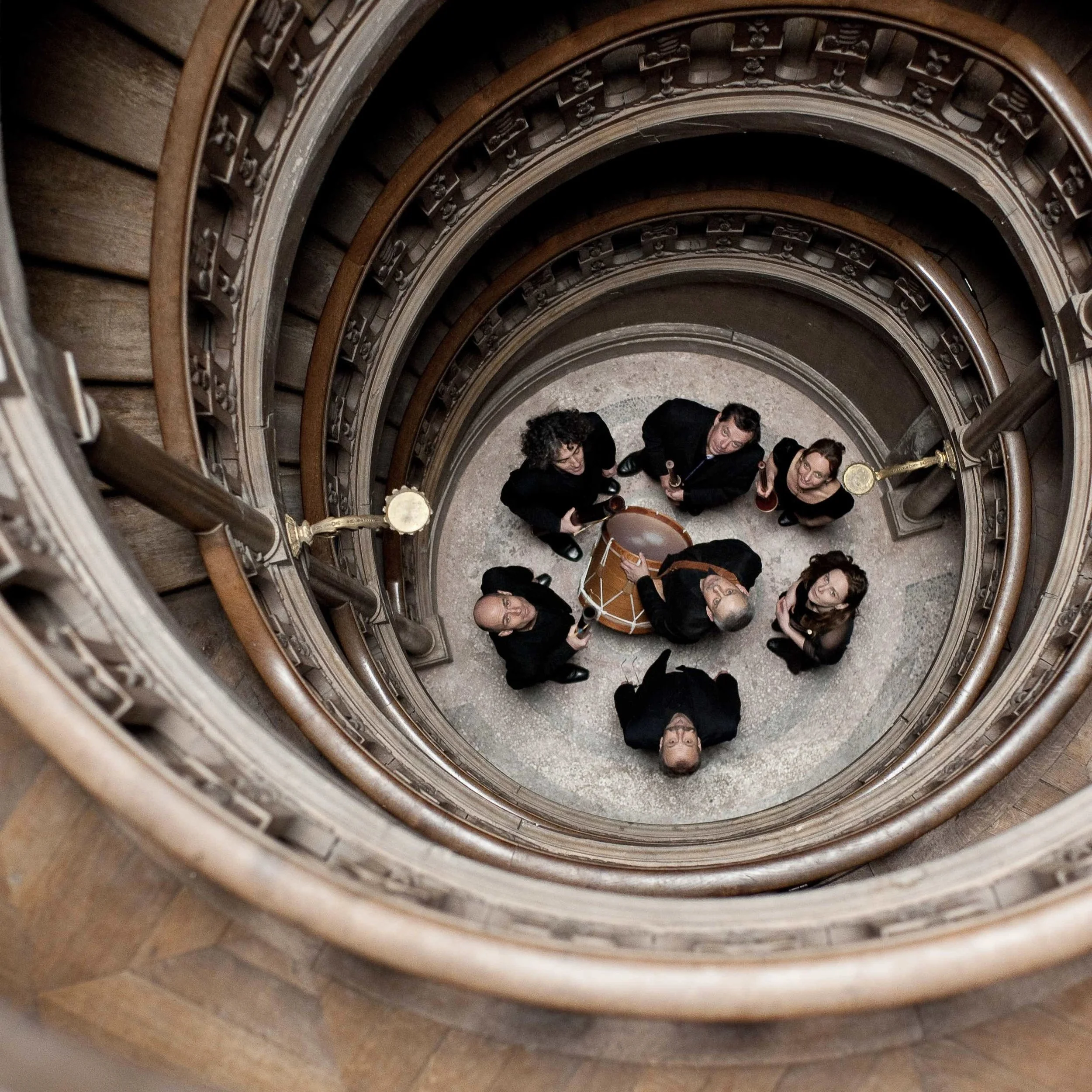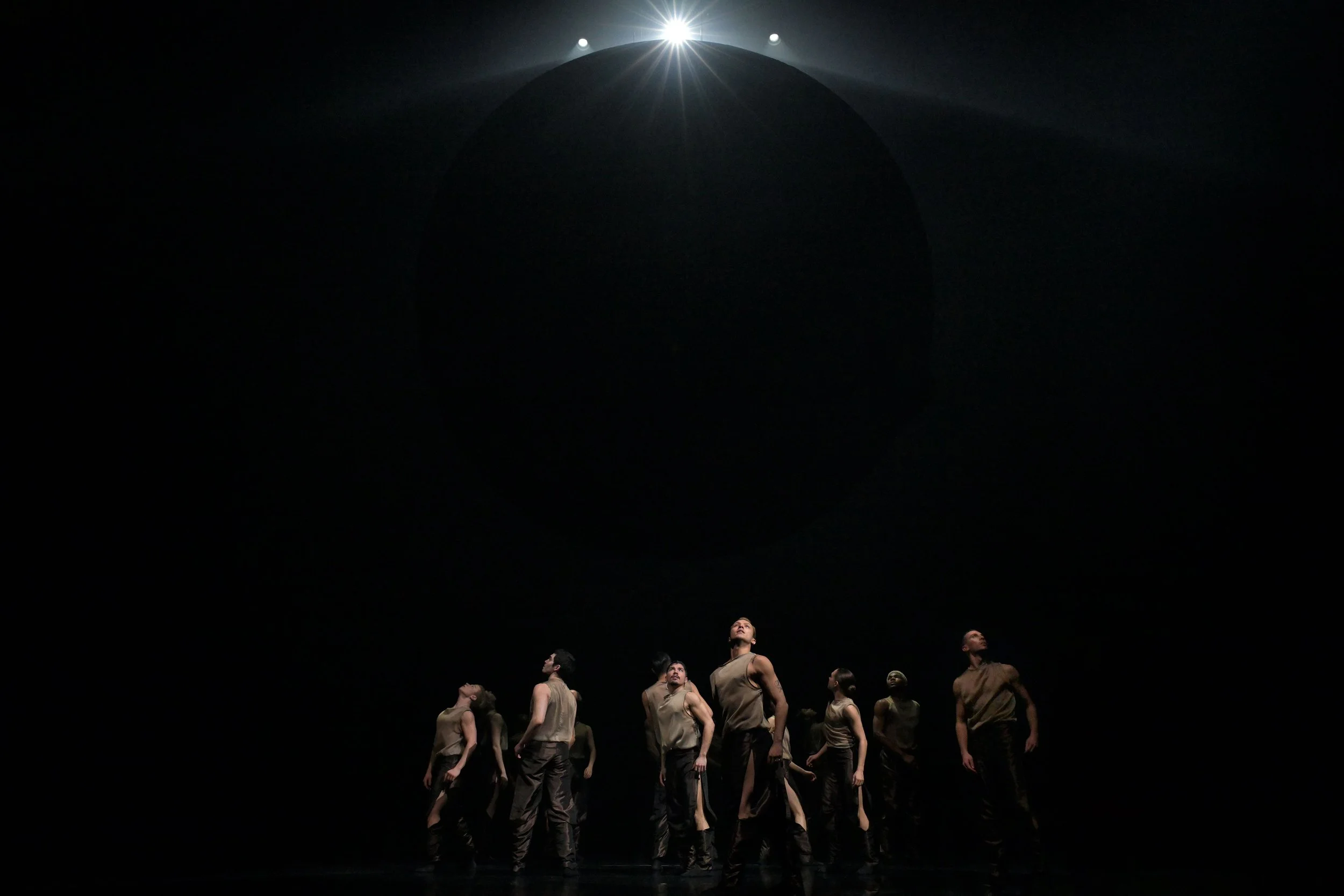Dance review: Waking nightmares and hallucinatory scenes haunt Peeping Tom's Diptych
In a surreal and outstanding conclusion to the DanceHouse season, the Belgian company warps time and gravity, toying inventively with cinematic tropes

Peeping Tom’s Diptych. Photo by La Biennale
DanceHouse presented Diptych at the Vancouver Playhouse from April 24 to 26
PEEPING TOM’S SURREAL dance-theatre work Diptych is so hallucinatory that, watching it, you constantly feel like your eyes are playing tricks on you.
In an eight-dancer show that finished DanceHouse’s season on an exhilarating high note, doors swing open and closed to reveal a closet one moment, a crowd of ghostlike figures the next, and an icy ship’s deck after that. Bodies are inexplicably swallowed up into beds and sconce lights move eerily on their own around the wall.
In the Belgian company’s strange and riveting work, reality blurs through low-tech trompe l’oeil and nonstop dance contortions. Time and space become fluid, rewinding, glitching, and fast-forwarding. The effect is mesmerizing and discombobulating all at once—with so much to absorb that it took the stunned audience an extended, palpable beat or two to jump to its feet in a rapturous standing O.
The work is split into two—”The Missing Door” and “The Lost Room”—with the dancers stepping in to move the scenery around in between, adding yet another level of “reality” to the goings-on.
What makes the double bill so brilliant is that it plays with a familiar array of archetypal characters and scenes. The wood-panelled cruise-ship cabin in “The Lost Room” is straight out of a film noir—maids and butlers in old-fashioned uniforms busily tidying the space as the action unfolds.
That familiarity allows choreographers Gabriela Carrizo and Franck Chartier to start fracturing reality, swerving into characters’ memories and fears before turning back into present time again. We can’t escape our grief or pain, this piece seemed to suggest, just as frantic stewards and maids can’t clean the blood off the floor, and just as “The Missing Door”’s portal-filled corridor, No Exit–like, offers no way out. We’re better to face the horror and hold on to each other for dear life.
Diptych’s puzzlebox works on multiple levels. On one plane, it is a stunning deconstruction of cinematic tropes. On another, it offers the threads of “stories” you can follow—such as the cruise-ship couple who are grappling with an unspoken trauma. It also rolls out endless, wildly inventive, technically demanding dance. In one stunning, hungrily erotic pas de deux, a couple rolls around and around the floor, almost climbing into each other as they tumble, tangling limbs. In another, a man and woman clutch a swaddled baby between them, dancing so serenely that the woman starts to float off the floor. A woman’s heels and ankles bend surreally as she walks, or she lifts suspended from her dance partner, legs up and outright, defying gravity.

Peeping Tom’s Diptych. Photo by La Biennale
At times, the sequences are absurdly funny; at one point, a ship’s steward gets locked in a time-space glitch, bouncing across the floor on his stomach like he’s caught in a stop-start earthquake that throws him up and down. Diptych also hits moments of Hitchcockian suspense and horror-movie eeriness; a mysterious murder has left a body on the floor, and there’s a mirror where characters find people staring creepily back at them through the warped and dirty glass. The tone shifts dramatically again when Diptych becomes deeply, achingly moving; “I’ll never be good enough for you,” a distraught woman yells at her husband in one of the show’s rare spoken moments. And it can fracture into terrifying chaos: a late sequence of disembodied heads and screeching seagull sounds marks a final break with reality and descent into insanity.
Perhaps the most lasting image of all of Diptych’s memorable sequences comes when one of the set’s many doors open to unleash a typhoon that sends the characters, and random papers, spinning and tossing violently in the windstorm. It feels like an apt metaphor for basically everything in the world right now—a nightmare that makes you wonder when you’ll wake up from it. ![]()
Janet Smith is cofounder and editorial director of Stir. She is an award-winning arts journalist who has spent more than two decades immersed in Vancouver’s dance, screen, design, theatre, music, opera, and gallery scenes. She sits on the Vancouver Film Critics’ Circle.
Related Articles
Company 605 and T.H.E Dance Company push cross-Pacific team of dancers to embody a society rushing toward the next thing, at the Scotiabank Dance Centre
The Dust Palace’s cabaret send-up stars a visionary fashion designer who sews costumes live onstage at The Cultch
Canadian-Brazilian interdisciplinary artist brings together film and dance in a work that can be enjoyed from different angles at the Roundhouse
Marco Goecke, Crystal Pite, Sharon Eyal, and Fernando Magadan provide a whirlwind of short work for tomorrow’s next dance stars
Presented with Boca del Lupo, the accessible production by the U.K.’s Seven Circles encourages interactive learning
Aussie troupe Gravity & Other Myths’ stripped-down spectacle has been a hit around the world
Senior dance artists offer decades of insight to the new event’s joyful collaborations with younger performers
Bobbi Jene Smith and Or Schraiber share a full-evening work, and hit productions of Crystal Pite’s Frontier and Shahar Binyamini’s BOLERO X return
In the midst of an international career, the Kidd Pivot dancer is setting a short Crystal Pite work for the student showcase
Moroccan and Spanish choreographers join the international contingent of event that runs at Firehall Arts Centre and SFU Woodward’s
With the Vancouver Latin American Cultural Centre, artists Marco Esccer and Carla Alcántara celebrate the centenary of the feminist writer’s birth
Powerful dancing across the board in Medhi Walerski’s striking Last light; Bobbi Jene Smith and Or Schraiber’s straight-from-the-heart Obsidian; and Marco Goecke’s vibrating Woke Up Blind
As part of Asian Heritage Month, the gallery’s first performers-in-residence use old-school radios and headlamps in a new piece that fuses dance, multimedia, and theatre
The Dance Centre prizes carry $5,000 in funding for each artist
Fifth edition of uncurated program provides a welcoming space for artist’s first dance-theatre piece
Tickets on sale today for a Simran Sachar–Justine A. Chambers choreographic collab, comedian Kiran Deol, and Indian classical music star Alam Khan
Batsheva Dance Company alumni’s fascinating journey around the globe and onscreen finally brings them to Vancouver with Obsidian
In a surreal and outstanding conclusion to the DanceHouse season, the Belgian company warps time and gravity, toying inventively with cinematic tropes
New Works hosts screenings, while the Dance Centre presents performances by the likes of Vanessa Goodman, Dance//Novella, and Lesley Telford
Ashvini Sundaram takes second place in prize presented by The Hawthorne Foundation and DanceHouse
At The Cultch’s Warrior Festival, circus performers alternate between base and flyer, dismantling long-standing assumptions
Olivier Award–winning dance-theatre troupe blends physically pummelling choreography with surreal worlds that blur reality and fantasy
Vancouver choreogapher Crystal Pite has won previous Oliviers for Revisor, Betroffenheit, and Flight Path
Early Music Vancouver program features a piffari, or wind band, accompanied by the early dances of French and Italian court festivities
Offerings also include Hungary’s circus-dance company Recirquel, as well as Robert Lepage and Guillaume Côté’s visually striking take on Shakespeare’s Hamlet
In the DanceHouse presentation, Le Patin Libre’s artists emulate bird flocks with unfettered glides and layers of emotion
Choreographer blends Kathak and contemporary influences in solo presented by the Dance Centre and New Works
At DanceHouse, Montreal choreographer Alexandre Hamel blends a love of birds and a background in competitive figure skating to create a dazzling new kind of ice show
Presented by VIDF with New Works and the Chutzpah! Festival, double bill premieres works by Alexis Fletcher and Fernando Hernando Magadan
Cosmic circles, monumental walls of light, and inventive partnering as new Andrea Peña and Fernando Hernando Magadan works bring audiences to their feet
































